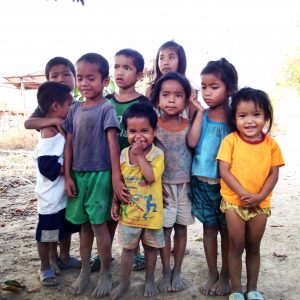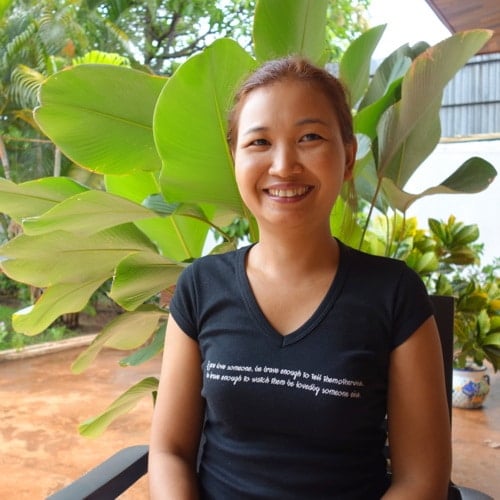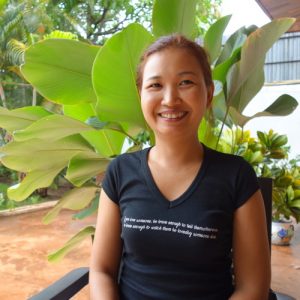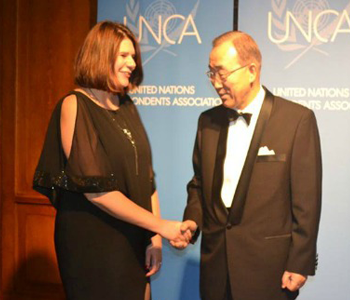
by Dee Harlow (Laos) | Aug 14, 2014 | 2014, Awareness, Being Thankful, Cultural Differences, Culture, Family, Inspirational, Kids, Lesotho, Life Balance, Living Abroad, Marketing, Motherhood, Siblings, Travel, Twins, Womanhood, World Motherhood, Younger Children
 My family and I have just returned home to the United States after living in Laos for the past two years. We’ve been back in the States for 1.5 weeks and the highlight of my day today was a successful trip to a clearance sale at the local used children’s clothing store here in Denver, Colorado.
My family and I have just returned home to the United States after living in Laos for the past two years. We’ve been back in the States for 1.5 weeks and the highlight of my day today was a successful trip to a clearance sale at the local used children’s clothing store here in Denver, Colorado.
For $200 U.S. dollars, I bought 50 pieces of clothing for my 4.5-year old boy and girl twins to last them (hopefully) for the next three years, when we will be living in Lesotho.
No, you’re not reading typos (WMB editors are awesome). Yes, that’s $200 for 50 pieces of clothes including: jeans, pants, shorts, collared shirts, t-shirts, cute shirts, dresses, skirts, leggings, pajamas, and swimwear, sizes 5 – 8. All are like new, and many top quality brands, which some of you might recognize: Gymboree, Hanna Andersson, Mini-Boden, Garnet Hill, Gap, Carter’s.
I’ve been shopping for used children’s clothing ever since my kids were born. Heck, they’ve been living mostly in hand-me-downs from relatives and friends and this store’s used clothing.
They’ve been happy. I’ve been happy. And we’ve all received compliments on their cute clothes. I really wouldn’t do it any other way.
Sure, I see loads of advertisements, storefronts and catalogs filled with great stuff I’d love to buy, and can afford to buy. But my practical sensibilities and appreciation of value for money mostly always stops me…
”They grow so fast.”
“It’ll just get dirty or torn up.”
“Hey, those are adult clothing prices!”
As they say, “Waste Not Want Not.” Or, “One Man’s Trash Is Another Man’s Treasure.”
When I was living and working in Singapore as an investment banker, single, no kids, I was a spendthrift. Not a care in the world, except to ensure I saved for my pension.
I used to give my housekeeper handbags and shoes from the back of my closet that had gotten moldy in the extreme humidity, and she would always be delighted to receive these items that I thought were in state of trash-worthy grossness.
Weeks later, I would compliment her on her great purse or shoes and she would say, “These are the ones you gave me Ma’am.” Seriously. I felt like a fool. All I had to do was wipe them clean and put on a coat of leather polish. Silly, young, spendthrifty me.
Now I make sure our belongings are well cared for so they can last, or so they can be passed on and re-used. In Laos, used items purchased or made in America were highly coveted and sold fast. Everyone from our housekeeper, gardener, guard, colleagues at work and folks on a “buy & sell” Facebook site, gobbled up everything that wasn’t typically available locally or across the border in Thailand. Mostly because it was either cheaper, or better quality.
Consumer products sold throughout Asia tend to be of very low and questionable quality, and often not available at all in Laos.
Coming back to the land of plenty and choices, I still try to maintain the same mindset. Things can be valued for much more fundamental reasons than merely being new, or beyond the marketing image of “need” or status or image.
Sure, we can bring in the extreme perspective of the garbage dump cities all of the world where people and children actually live off of, and even earn a living from garbage. And our gut reaction is to think about how we can help them and change their situation, and feeling with a passion that something must be done about them, when in fact, it starts with us.
If we can change our habits and our mindsets, if we can demand less, if our values can put a limit on the things we accumulate versus things we re-use, then…
Who knows? Who knows what the solution is to uber-consumerism? Everyone all over the world seems to want it. Our demand for it makes it thrive. It’s not completely wrong, yet somehow it doesn’t seem right.
What does seem right to me is $200 for 50, and I’ll stick with it for as long as I can.
This is an original post to World Moms Blog by our mother of twins writer, Dee Harlow, currently in transit to live in Lesotho. You can also find her on her blog Wanderlustress.
Photo credit attributed to Mark Frauenfelder. This photo has a Flickr Creative Commons Attribution-Non-Commercial-ShareAlike license.
One of Dee’s earliest memories was flying on a trans-Pacific flight from her birthplace in Bangkok, Thailand, to the United States when she was six years old. Ever since then, it has always felt natural for her to criss-cross the globe. So after growing up in the northeast of the US, her life, her work and her curiosity have taken her to over 32 countries. And it was in the 30th country while serving in the Peace Corps in Uzbekistan that she met her husband. Together they embarked on a career in international humanitarian aid working in refugee camps in Darfur, Sudan, and the tsunami torn coast of Aceh, Indonesia.
Dee is now a full-time mother of three-year old twins and continues to criss-cross the globe every two years with her husband who is in the US Foreign Service. They currently live in Vientiane, Laos, and are loving it! You can read about their adventures at Wanderlustress.
More Posts

by Dee Harlow (Laos) | May 29, 2014 | Awareness, Breastfeeding, Food, Health, Humanitarian, Laos, Maternal Health, Millennium Development Goals, Nutrition, Uncategorized, World Voice, Younger Children
 While I still have the opportunity to write another post for the WMB community before leaving Laos later this year, I feel compelled to tell you about child nutrition and the problem of stunting in Laos because stunting is a seemingly invisible problem that can go unnoticed unless special attention is drawn to highlight the issue.
While I still have the opportunity to write another post for the WMB community before leaving Laos later this year, I feel compelled to tell you about child nutrition and the problem of stunting in Laos because stunting is a seemingly invisible problem that can go unnoticed unless special attention is drawn to highlight the issue.
Ethnically, most Southeast Asian people are shorter and have a smaller frames than most other races throughout the world. This fact makes it easy to say that Lao babies and children tend to be small or smaller because of their race.
Yet at first glance Lao children appear to be healthy (and super cute), a closer look and personal interaction will almost always reveal that the children are a few years older than what you had first assumed. I recently met an adorable girl in a northern village at a school where I delivered books by boat since there is no road access to her village. Upon speaking with her (in Lao) I was impressed by how well behaved, articulate and “mature” she was for what I assumed to be a 6-year old. (I have two 4-year old twins so I was instantly optimistic about their potential in just two short years to be as well behaved as this girl.) She turned out to be 10-years old. This has happened time and time again to me, to my colleagues, and to many newcomers to Laos.
Lao children are among the most undernourished in Southeast Asia with 44% stunting of children under 5-years old. It is the single largest contributor to infant and child mortality in the country with 59% of all child deaths related to nutritional deficiencies. Chronic malnutrition predisposes children to higher morbidity and mortality, lower educational attainment, and reduced workforce productivity.
For a country experiencing rapid economic growth and increasing income disparities, fierce external human resource competition puts the country at risk of leaving a majority of the Lao population behind others who will be more able to keep apace. Stunting is a problem that needs be addressed for the immediate wellbeing of Lao children and to be resolved for the future potential of the Lao people.
The Lao government is working closely with experts and development partners on how to tackle this important issue. It is not easy. Poor breast-feeding and weaning practices are widespread. Almost all mothers give food supplements (such as chewed glutinous rice), and pure water, to infants within a few weeks of birth. Harmful practices (such as discarding colostrum) and other food taboos for pregnant women reduce disease resistance for newborns and increase fetal undernutrition. Micronutrient deficiencies, inadequate intake of vitamin A, anemia and iodine deficiency, all further hinder child development.
The current health system is not only faced with challenges of delivering micronutrients, immunizations and necessary vitamins to the most vulnerable population, but they are additionally burdened by the daunting task of changing people’s behaviors to improve dietary habits, increase nutritional intake, and overcoming cultural belief and religious belief obstacles to improved nutrition status among rural and multi-ethnic communities. The task is daunting.
What is being done and what needs to be done?
There are some great organization here making slow but successful strides on a small-scale basis. UNICEF, WFP, IFAD, Save the Children, the Scale Up Nutrition initiative and others who are collaborating closely with government health officials, but resources are scarce, especially in an often overlooked country like Laos.
- We can channel financial support to these organizations for their work on nutrition in Laos.
- We can lobby our governments to increase foreign assistance resources to address the poor state of healthcare in Laos (e.g., Laos is not one of the United States’ ‘priority countries’ receiving Global Health Initiative (GHI) funding. Ask U.S. representatives, Why not?)
- We can voice our concern to private and public interests who are taking advantage of opportunities in Laos to improve their social welfare practices by investing in better healthcare in communities where they pursue their business interests.
- We can ask the question to anyone willing to listen about who should be accountable to improving the welfare of children beginning their lives under such great odds in Laos.
Hopefully someday, someone will listen and take action.
This is an original post to World Moms Blog by our mother of twins writer, Dee Harlow in Vientiane, Laos. You can always find her writing on her blog, Wanderlustress.
Photo credit attributed to the author.
One of Dee’s earliest memories was flying on a trans-Pacific flight from her birthplace in Bangkok, Thailand, to the United States when she was six years old. Ever since then, it has always felt natural for her to criss-cross the globe. So after growing up in the northeast of the US, her life, her work and her curiosity have taken her to over 32 countries. And it was in the 30th country while serving in the Peace Corps in Uzbekistan that she met her husband. Together they embarked on a career in international humanitarian aid working in refugee camps in Darfur, Sudan, and the tsunami torn coast of Aceh, Indonesia.
Dee is now a full-time mother of three-year old twins and continues to criss-cross the globe every two years with her husband who is in the US Foreign Service. They currently live in Vientiane, Laos, and are loving it! You can read about their adventures at Wanderlustress.
More Posts

by Dee Harlow (Laos) | Sep 19, 2013 | Birthing, International, Maternal Health, Nutrition, World Motherhood
 One of the most exciting day in any parent’s life is the day we get to bring our baby home. I was ecstatic to bring our two twin babies home, and very scared too about being left on my own to care for them. But it was indeed one of the most exciting days of my life.
One of the most exciting day in any parent’s life is the day we get to bring our baby home. I was ecstatic to bring our two twin babies home, and very scared too about being left on my own to care for them. But it was indeed one of the most exciting days of my life.
On a recent work trip down to Salavan Province in southern Laos, I got to see two beautiful healthy babies on their way home from a district hospital with their parents. I don’t know who was more excited, them or me! To witness that special moment really touched me because of the volunteer work that I’ve been doing with Cleanbirth.org to help expectant mothers and newborn babies get a safe start in life by providing “clean birth kits” to women in rural Laos who would otherwise give birth unattended at home or in the forest using often unsanitary tools that can cause infection leading to death of the mother or child.
For me to know the long and difficult road that these two mothers have taken to give birth safely made the miracle of birth all the more awesome to me. To know that unless they traveled all way to a provincial hospital, they most likely did not get any prenatal check ups, or vitamin supplements, or ultrasounds. Although the standard of care that we consider basic are indeed accessible and cost relatively little because they are subsidized by the government, they are only available in large urban centers. This means that the 70% of the Lao population who live in rural areas either require a lot of resources to receive this care, or get none at all. Many factors contribute to the inaccessibility of the care expectant mothers need including, geographic remoteness, lack of infrastructure and seasonal limitations for travel on rough roads, lack of transport or money to pay, little knowledge of the health requirements of prenatal care or services available, as well as family priorities of working for subsistence living and other household responsibilities, and many others. (more…)
One of Dee’s earliest memories was flying on a trans-Pacific flight from her birthplace in Bangkok, Thailand, to the United States when she was six years old. Ever since then, it has always felt natural for her to criss-cross the globe. So after growing up in the northeast of the US, her life, her work and her curiosity have taken her to over 32 countries. And it was in the 30th country while serving in the Peace Corps in Uzbekistan that she met her husband. Together they embarked on a career in international humanitarian aid working in refugee camps in Darfur, Sudan, and the tsunami torn coast of Aceh, Indonesia.
Dee is now a full-time mother of three-year old twins and continues to criss-cross the globe every two years with her husband who is in the US Foreign Service. They currently live in Vientiane, Laos, and are loving it! You can read about their adventures at Wanderlustress.
More Posts

by Dee Harlow (Laos) | Jun 27, 2013 | 2013, Birthing, Culture, Eye on Culture, Inspirational, World Moms Blog, World Motherhood

Our “Casting a Wider Net” series features mothers around the world whose voices have typically been excluded from the blogosphere, due to lack of access to the internet, low literacy or poverty. This feature aims to include their important and distinct perspectives with interviews and occasional video clips.
Peng is a soft spoken but opinionated housekeeper who is meticulous, professional and very kind. Like many of her peers, she switched careers to become a housekeeper because it pays more money. After finishing high school, her father paid for her to attend trade school to become a trained cook, after which she began working a stable but odd hours catering job in a big hotel here in the capital city of Vientiane. Despite her burgeoning restaurant career, after one year Peng’s father advised her to become the housekeeper of his then foreigner boss instead, not only because it paid more but offered more reasonable hours and a nice environment in a large, well appointed home. She hasn’t looked back on her restaurant career and still agrees today that being a housekeeper for foreigners pays more than restaurant work as an assistant cook, even in large establishments.
The only time Peng has stopped working was when she became a mother to her daughter, Cofie, and raised her at home for her first four years. Cofie was born in 2001, in a small hospital near Peng’s house on the outskirts of the city. Peng said that she chose this particular hospital to give birth because it was close by and not as crowded as the main government run Mahosot Hospital. And good thing that it was nearby her home because she was turned back twice within two days after her initial contraction pains started. (more…)
One of Dee’s earliest memories was flying on a trans-Pacific flight from her birthplace in Bangkok, Thailand, to the United States when she was six years old. Ever since then, it has always felt natural for her to criss-cross the globe. So after growing up in the northeast of the US, her life, her work and her curiosity have taken her to over 32 countries. And it was in the 30th country while serving in the Peace Corps in Uzbekistan that she met her husband. Together they embarked on a career in international humanitarian aid working in refugee camps in Darfur, Sudan, and the tsunami torn coast of Aceh, Indonesia.
Dee is now a full-time mother of three-year old twins and continues to criss-cross the globe every two years with her husband who is in the US Foreign Service. They currently live in Vientiane, Laos, and are loving it! You can read about their adventures at Wanderlustress.
More Posts

by Dee Harlow (Laos) | Feb 28, 2013 | Culture, Discipline, Family, Kids, Living Abroad, Motherhood, Multicultural, Parenting, World Moms Blog, World Motherhood
 What are the rules for parenting other children or giving parenting advice or just plain parenting interference? And what is the appropriate response?
What are the rules for parenting other children or giving parenting advice or just plain parenting interference? And what is the appropriate response?
I imagine it differs by country and culture, by personality and preference. I’ve been scolded in both Mexico — and now, in Laos — about not dressing my children “warmly” enough during the “cool” season: (Here, what is considered “cold” to the locals is perfect and refreshing for us to enjoy, say, in jeans and a t-shirt without wrapping ourselves in sweaters and down jackets like everyone else around us.) With an understanding nod and smile, I always reply with a cheerful yet emphatic, “To us, this isn’t cold. It’s perfect!”
For all the concern in other countries about my children being cold, there is a surprising lack of concern for their over-consumption of sweets. One time while waiting to board our plane, a troupe of Korean men and women each gave my kids a piece of candy, repeatedly. After one or two, I asked my kids to politely say, “Thank you.” After the fourth, fifth, sixth piece, I made them do the same while I motion a polite, “Thank you, but please, no more.” Then, when they cojoled my kids to take even more, I resorted to a stern-faced, “NO thank you,” and prohibited my kids from escaping my firm grasp. Enough is enough no matter how kind the gesture.
(Another candy incident that elicited an immediate “No” from me without even a “Thank you” was returning to our hotel in Vietnam late at night with two obviously over-tired kids and having the doorman hand them a bowl (yes, a bowl!) full of candy to grab!)
(more…)
One of Dee’s earliest memories was flying on a trans-Pacific flight from her birthplace in Bangkok, Thailand, to the United States when she was six years old. Ever since then, it has always felt natural for her to criss-cross the globe. So after growing up in the northeast of the US, her life, her work and her curiosity have taken her to over 32 countries. And it was in the 30th country while serving in the Peace Corps in Uzbekistan that she met her husband. Together they embarked on a career in international humanitarian aid working in refugee camps in Darfur, Sudan, and the tsunami torn coast of Aceh, Indonesia.
Dee is now a full-time mother of three-year old twins and continues to criss-cross the globe every two years with her husband who is in the US Foreign Service. They currently live in Vientiane, Laos, and are loving it! You can read about their adventures at Wanderlustress.
More Posts

 My family and I have just returned home to the United States after living in Laos for the past two years. We’ve been back in the States for 1.5 weeks and the highlight of my day today was a successful trip to a clearance sale at the local used children’s clothing store here in Denver, Colorado.
My family and I have just returned home to the United States after living in Laos for the past two years. We’ve been back in the States for 1.5 weeks and the highlight of my day today was a successful trip to a clearance sale at the local used children’s clothing store here in Denver, Colorado.



 One of the most exciting day in any parent’s life is the day we get to bring our baby home. I was ecstatic to bring our two twin babies home, and very scared too about being left on my own to care for them. But it was indeed one of the most exciting days of my life.
One of the most exciting day in any parent’s life is the day we get to bring our baby home. I was ecstatic to bring our two twin babies home, and very scared too about being left on my own to care for them. But it was indeed one of the most exciting days of my life.






